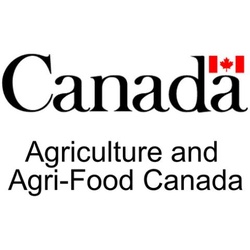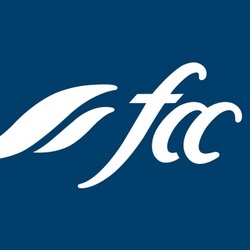
Livestock Tax Deferral Provision
At a glance
- Up to 15% of project cost
- Unspecified
- Agriculture, forestry, fishing and hunting
- Canada
- For-profit business
- Sole proprietorship
- All revenue ranges
- All organization sizes
- Rural or Northern Residents
Overview
If you sold at least 15% of your breeding herd due to drought or flooding in Gaspésie, New Brunswick, Prince Edward Island or Northwestern Nova Scotia, you can defer up to 90% of the sale proceeds to the following year.
Activities funded
Eligibility
Eligibility for the Livestock Tax Deferral provision is determined by specific criteria related to the area's condition and herd reduction.
- Farmers must carry on a farming business in a prescribed area affected by drought, excess moisture, or flooding.
- The breeding herd must have been reduced by at least 15%.
- Regions are prescribed based on forage yields being less than 50% of the long-term average due to drought or flooding.
- Regions adjacent to qualifying areas are also eligible if they experience similar adverse conditions.
Who is eligible?
The Livestock Tax Deferral provision is available to farmers operating within prescribed regions who have sold part of their breeding herd due to adverse weather conditions. Specifically, it targets those in identified drought or flood zones who have had to reduce their breeding herd by at least 15%.Who is not eligible
This provision primarily targets farmers within specific prescribed regions affected by drought or flooding. There are no explicit mentions of other industries or businesses being eligible or restricted.
Eligible geographic areas
This provision benefits farmers operating in specified regions identified due to adverse weather conditions. Eligibility is determined by drought and flood region designations.
- Designated drought and flood regions as prescribed by the Canadian government.
- Regions adjacent to the prescribed drought and flood regions beginning in 2024.
Selection criteria
In order to qualify for the Livestock Tax Deferral provision in Canada, farmers must meet specific evaluation and selection criteria. The criteria include the percentage reduction of the breeding herd and the designation of prescribed drought or flood regions by the Minister of Agriculture and Agri-Food Canada.
- Breeding herd must be reduced by at least 15% to qualify for income deferral.
- Different levels of income deferral are available based on the percentage of reduction in the breeding herd.
- Prescribed Drought and Flood Regions are designated when forage yields are less than 50% of the long-term average due to drought or flooding.
- Regions must have recognized geo-political boundaries and significant industry impact to be designated.
- Assessments of prescribed regions are made based on spring moisture, summer rainfall, and forage yield estimates.
How to apply
Identify Eligibility
- Determine if your farm is located in a region that has been prescribed due to drought or flood for the relevant year by consulting the prescribed regions list.
- Ensure that your breeding herd has been reduced by at least 15% as required for eligibility.
Gather Documentation
- Compile records of livestock sales and purchase details for the applicable tax year.
- Ensure you have documentation supporting the reduction in your breeding herd.
Calculate Deferral
Complete Tax Reporting
- Use the CRA publication T4002, Chapter 2 to correctly report your farming income deferral on Line 9470.
- Seek advice from the Canada Revenue Agency if needed to ensure accuracy.
Submit Tax Forms
Confirm Submission
Additional information
Here are additional relevant details for this grant:
- Regions adjacent to qualifying areas are also included to ensure broader coverage for farms affected by adverse weather conditions.
- Updates to prescribed regions are monitored and communicated throughout the growing season to keep farmers informed.
- The process for identifying prescribed regions has been streamlined to allow earlier identification and assistance for farmers.
- The Canadian Drought Monitor plays a crucial role in gathering data used to identify prescribed regions.
Contacts
Frequently Asked Questions about the Livestock Tax Deferral Provision Program
What is the Livestock Tax Deferral Provision?
How much funding can be received?
What expenses are eligible under Livestock Tax Deferral Provision?
What is the deadline to apply?
Is the Livestock Tax Deferral Provision a grant, loan, or tax credit?
Who are the financial supporters of the Livestock Tax Deferral Provision?
Who is eligible for the Livestock Tax Deferral Provision program?
Who can I contact for more information about the Livestock Tax Deferral Provision?
Where is the Livestock Tax Deferral Provision available?
More programs like this

AgriScience Program – Clusters
Agriculture and Agri-Food Canada (AAFC)
AgriCompetitiveness Program
Agriculture and Agri-Food Canada (AAFC)
Farm Equipment Financing
Farm Credit Canada (FCC)
Women Entrepreneur Program
Farm Credit Canada (FCC)
AgriAssurance Program – National Industry Association Component
Agriculture and Agri-Food Canada (AAFC)
African Swine Fever Industry Preparedness Program (ASFIPP) - Welfare Slaughter and Disposal Stream
Agriculture and Agri-Food Canada (AAFC)
AgriRisk Initiatives - Research and Development Contribution Funding
Agriculture and Agri-Food Canada (AAFC)
AgriRisk Initiatives - Microgrants Funding
Agriculture and Agri-Food Canada (AAFC)
AgriScience Program – Projects
Agriculture and Agri-Food Canada (AAFC)